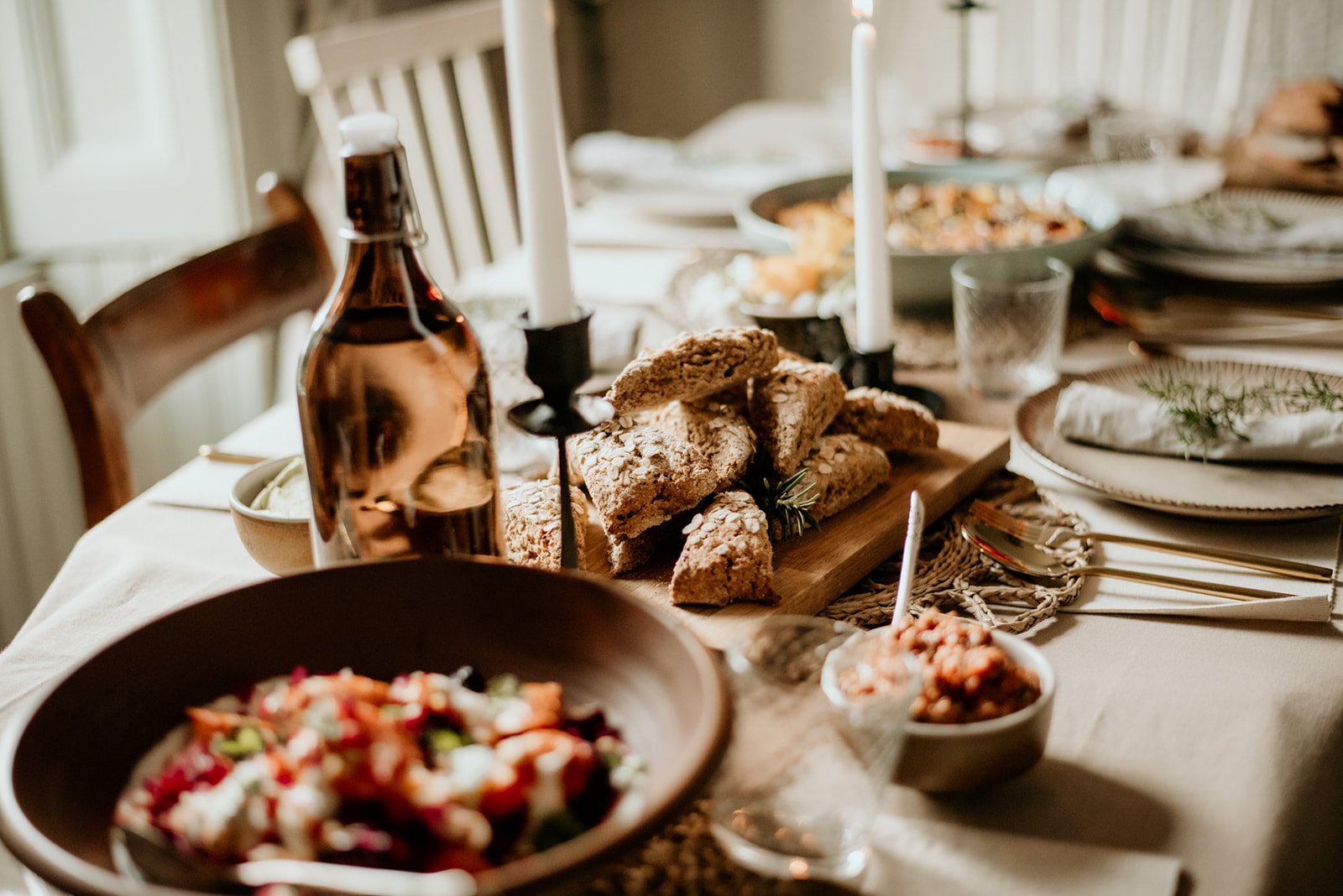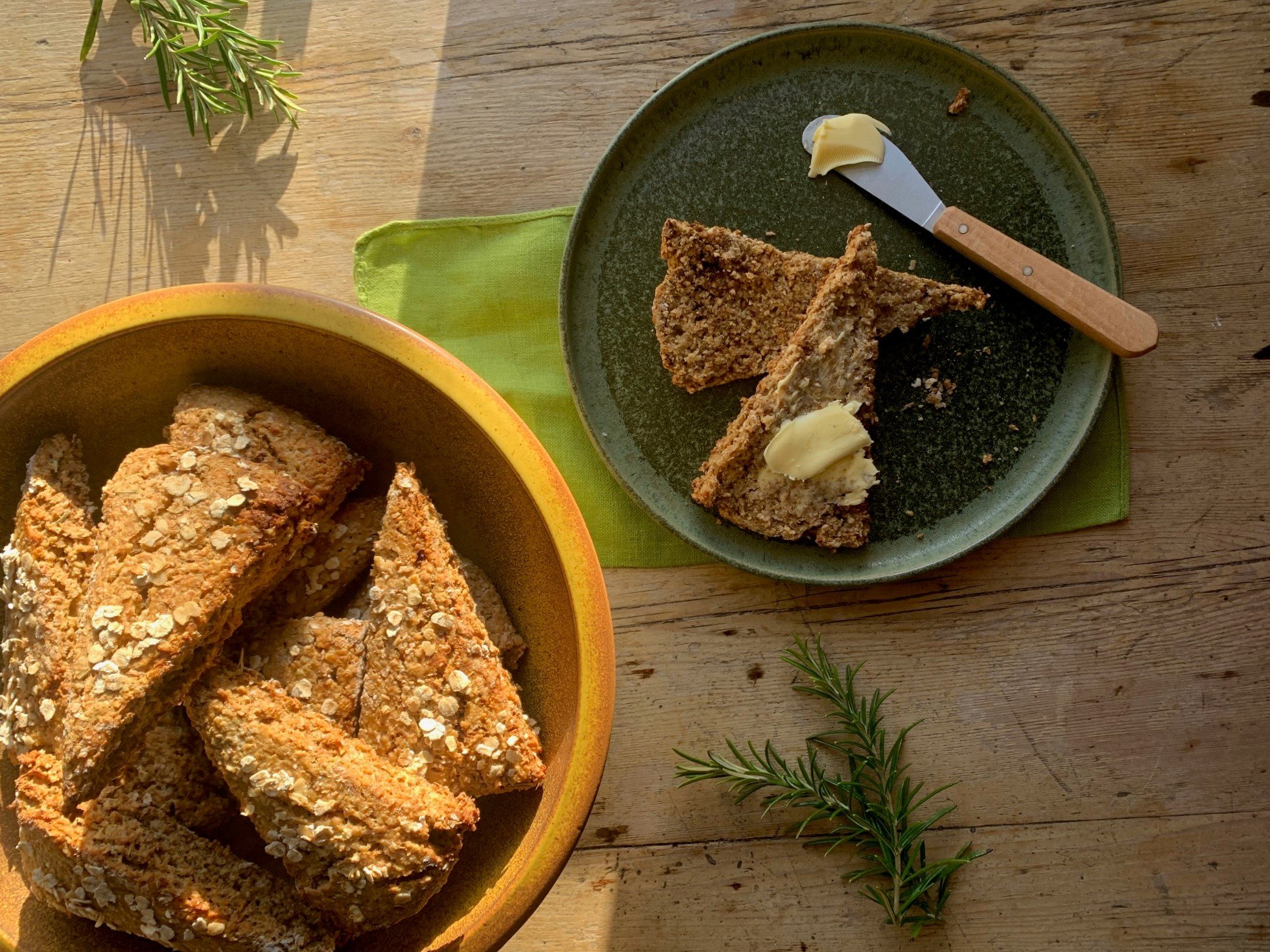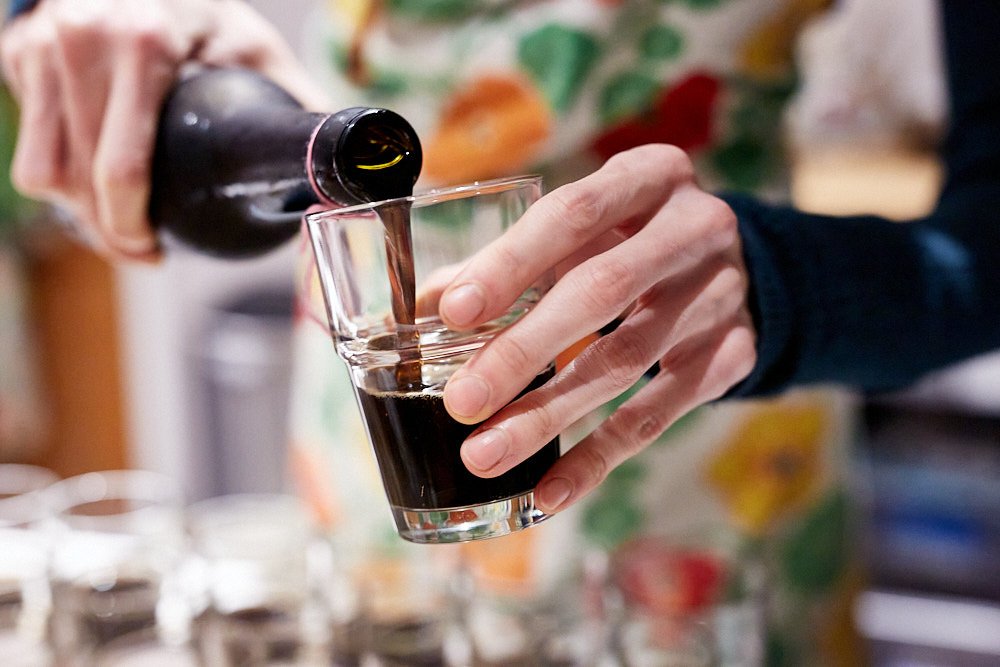In the belly: Food traditions for Brigid’s Day
This year the 1st February, which marks St Brigid’s Day and the Celtic festival of Imbolc, will be a national holiday in Ireland. This is the first time ever there has been a public holiday in Ireland named for a woman. The wonderful people at Herstory spearheaded the campaign to have Brigid’s Day marked as a national holiday – to some extent rebalancing the focus on St Patrick as the patron saint of Ireland towards a more inclusive and diverse understanding of Ireland’s past. One that recognises women and men equally, the North and the South and encompasses both our Christian and Celtic heritage.
Photo by Agne Cindarova Photography of an Imbolc feast made by me for Essential Nature Yoga Imbolc Retreat this weekend
Brigid is not just a Christian saint, her story reaches much further back into our Celtic past. Before Brigid was feted as a Saint, she was (and is) a powerful Celtic goddess who returned from underground at the beginning of each February, casting her cloak across the cold, hibernating land, and heralding the very beginnings of Spring. The return of light, growth and fertility after the deep rest and dreaming of Winter. Her story reminds me of Demeter and Persephone in Greek mythology. Persephone, as the reluctant bride of Hades, was imprisoned in the underworld for six months of each year. This made her mother Demeter (the Goddess of the harvest) deeply sad. She withdrew her favour from the land; the plants stopped growing, animals hibernated, and Winter came while she mourned her missing daughter. Each spring Persephone would return to the world and Demeter would once again bestow her blessings on the land.
I was so inspired by this story that we named our two greenhouses, Demeter and Persephone, after these Greek goddesses. On our farm this is also the time of year we start to sow seeds again – February, March and April always mark the time when there is much caretaking of seedlings, worrying about warmth and light and cheeky slugs (who can decimate a tray of seedlings overnight). There is jostling and rearranging in the greenhouses to ensure enough space, light and optimum conditions for each tiny plant. This year Jo and Cat (our garden team) will sow over 40,000 seeds. The old Gaelic translation of the word Imbolg is ‘in the belly’, our ancestors were recognising the importance of fertility at this time of year. We can see it in the snowdrops sprouting, the baby lambs frolicking and the seeds being sown for this year’s crops.
Brigid is more than a Goddess of fertility – she is also the goddess of poetry, craft and blacksmithing, of hearth and home, of healing and prophecy, and of domestic animals (particularly cows which were considered especially sacred in Ireland) and brewing. I’ve been thinking, and reading, about the foods that were eaten, throughout history, to celebrate Brigid and the Celtic festival of Imbolc. Particularly when developing the menu for our upcoming Imbolc Supper Club this February. In the past it was considered wise to leave out offerings for Brigid on the evening of 31st January to both honour her return to the land and to ensure her favours for fertility and prosperity for the year ahead. I’ll be leaving out a homemade Bannock with some of my three-cornered leek butter.
Here are five of my favourite Brigid’s Day food traditions.
Churn your own butter.
Butter is an important part of Imbolc celebrations. One spelling or root of the word is oilmelc – which translates as ‘new milk’ recognising animals, especially sheep, coming into milk as lambing season begins. There used to be a strong custom of churning butter on Brigid’s Day, it was believed if you churned good butter then on the 1st February you would guarantee fresh butter for the year ahead. Making your own butter is much easier than you think, and it’s a fun project to do with kids, who will be amazed by the transformation. This recipe will make about 400-500g butter.
Put 1.2 litres of double cream (not fridge cold, it’s better if it’s at room temperature) in a stand mixer with the whisk attachment (or a bowl with an electric whisk handy) and whisk on medium speed until the butter separates from the buttermilk. There will be blobs of butter in the bowl and the buttermilk will be sloshing around. Turn the butter our into a sieve and strain off the buttermilk. I keep this to make soda bread or Bannocks (see below). Squeeze the butter in the sieve to remove as much liquid as possible. Then put the butter back in the cleaned mixing bowl and whisk for another minute to remove more buttermilk. Strain through the sieve again. Put the butter in a bowl of clean, cold water and (with cold hands) squeeze it gently to expel any remaining buttermilk, which will otherwise make the milk go off. Rinse the butter a few times more until the water is clear. Weigh the butter and add 1-2g (about 1/4 teaspoon) salt per 100g butter and knead it into the butter. You can leave it unsalted, but it won’t last as long. I like to put it on greaseproof paper, shape it into a log and then wrap it in the paper and store it in the fridge. You can also use butter pats to shape the butter.
Make bannocks
Bannocks are particularly associated with Imbolc, although in the past a ceremonial Bannock would have been made to celebrate many of the Celtic wheel festivals and we can still see that in the barmbracks that are often made at Samhain. I’m not sure why the tradition of making bannocks at Imbolc has continued, perhaps because of Brigid’s association with agriculture and dairy or more likely because of Brigid’s crossover into the Catholic pantheon as Saint Brigid – taking many of the pre-Christian traditions with her.
In Ireland and Scotland, a bannock most often refers to a type of thick flatbread that would have traditionally been cooked on a griddle over an open fire and often cut into quarters (or farls). Bannocks are traditionally made with oats (which grow well in the Irish climate), sometimes mixed with another flour. They would have been the daily bread of most people on these islands - at festivals they would have been made more special with the addition of herbs, dried fruit, sugar and spices. If you fancy making them yourself, click here for my rosemary bannock scone recipe. It’s very easy because you cook them in an oven rather than on the griddle.
Eat dandelions
I saw my first dandelions in flower on my walk yesterday! There is something intensely joyful about the splash of yellow in the lawn or on the verges. I know many people curse dandelions as invasive weeds, but I love them! They are an importantly early source of nectar for bees (and other pollinators) just waking up from Winter slumber. And they are edible too! Dandelion flowers with their ray-like petals look like little suns, and because Imbolc is a festival welcoming the return of the light and this is the time of year when we often see the first dandelions they have a strong association. I won’t be picking dandelions to eat just yet, I like to wait until there are hundreds in my lawn, so I’m not disadvantaging the bees! Then I’ll make dandelion honey (click for the recipe) and dandelion fritters (basically dandelion fritters dipped in tempura batter and then fried until crisp.
On yellow flowers, gorse is also reappearing in the hedgerows and fields, the bright yellow flowers are edible and have a distinct coconutty scent. I like to pick the flowers to scatter over cakes and salads, bring some of the late Winter sunshine into our food.
Brew some rosemary tea
We make lots of fresh herb teas here, but I only discovered how delicious rosemary tea is last year. Add a couple of sprigs of fresh rosemary to a teapot or mug, pour over boiling water and allow to steep for about five minutes and then sip. If you want to sweeten it add a little bit of honey. Rosemary is an important medicinal herb – which is perhaps why it is associated with Brigid the healer. It’s an excellent digestive aid, so perfect to drink after a celebratory meal and also aids memory and focus, so I find it good to drink at this time of year when I’m moving from the ‘hibernation’ of Winter and into the new energy of early Spring.
Drink (or brew) a beer
Brigid is the goddess of brewing. Brewing beer is such an important part of our agricultural past, some archaeologists even argue that it was growing grains for beer, rather than for food, that was how farming began. In the past beer would have been drunk by pretty much everybody, generally being safer than water because it was boiled hard during the brewing process. Women would have overseen brewing along with breadmaking – the two skills often being linked because of the yeasts required to transform the grains into beer and bread. This year Jo has brewed a special rosemary-infused ale for Brigid which we’ll be sharing with guests at our Imbolc supper clubs. So if you are doing dry January (I am not!) then perhaps the 1st February would be a good day to raise a glass to Brigid.
If you try out any of my Imbolc food traditions this month I’d be so delighted to hear how you get on. Or if you have any of your own traditions then I’d love to hear them.




